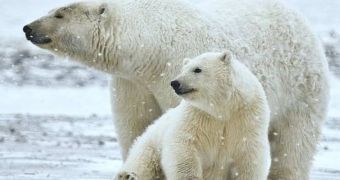Despite the fact that the Arctic regions have passed through numerous changes over the millennia, one thing has remained the same – the fact that they are left in darkness for six months each year. One would be inclined to think that this would not allow for the development of a large number of species there, but it would seem that, in fact, the opposite is true. More than 50 million years ago, the Arctic was teeming with life, from giant, sequoia-like trees to flying lemurs, giant tortoises, alligators, and so on. And they seemed to have no problem living in darkness for half of their lives.
At this point, researchers are wondering what the animals did exactly during these periods of time, when they couldn't see too many things around them. While some argue that most migrated South of the Arctic Circle, others say that new fossils indicate the fact that the vast majority stood behind even during the winter. One reason that would support the latter claim is the fact that anthropologists know that the North Pole was the region from which a large number of animal species spread to North America, Asia and Europe, using land bridges that were not submerged at the time, ScienceNow reports.
They argue that, in order for the species to be able to move across continents, some of their members would have had to take up residence in the Arctic, so as to allow for new generations to form. Most likely, these animals did not travel each year South of the Circle. University of Colorado in Boulder (UCB) Vertebrate Paleontologist Jaelyn Eberle collaborated with a team of geochemists in her attempt to find answers for these questions, and, for this purpose, analyzed the fossilized teeth of a hippopotamus-like animal, known as Coryphodon.
The researchers were looking for changes in the fossils' enamel layer, which can hold clues as to the climate the animals were living in. It all has something to do with the ratio of oxygen isotopes (oxygen-16 to oxygen-18), which can be found in certain climates. When the animals drank water in colder regions, they got more oxygen-18 in their teeth. By analyzing these records, the team was able to conclude that the traces matched the date others obtained from analyzing the wood of ancient trees. This means that, indeed, the Arctic was inhabited throughout the year, more than 50 million years ago.

 14 DAY TRIAL //
14 DAY TRIAL //